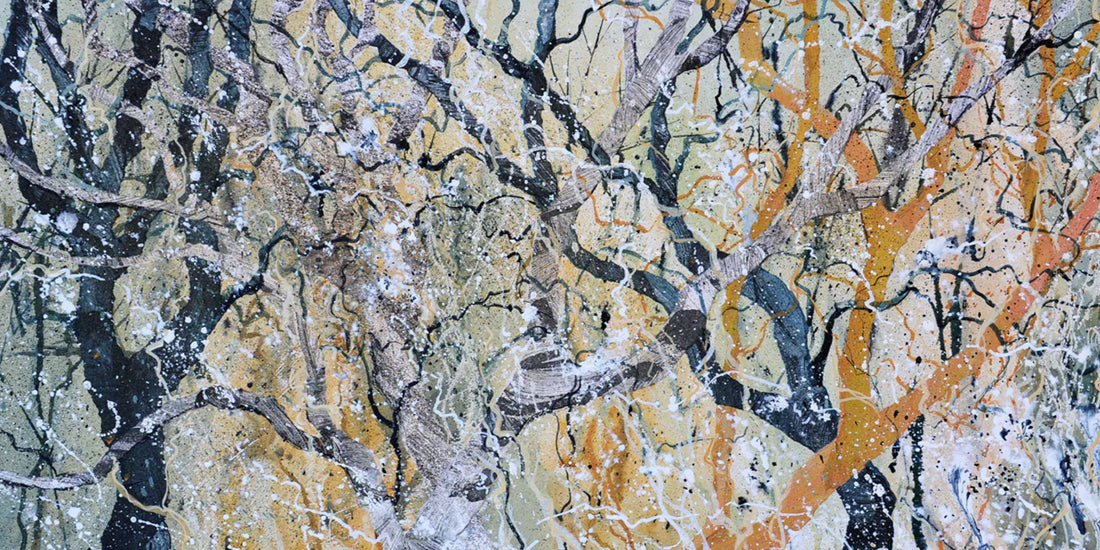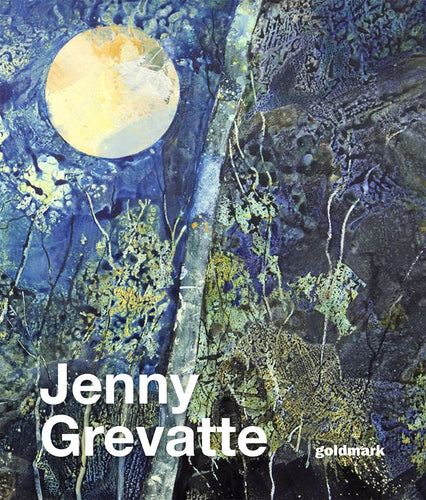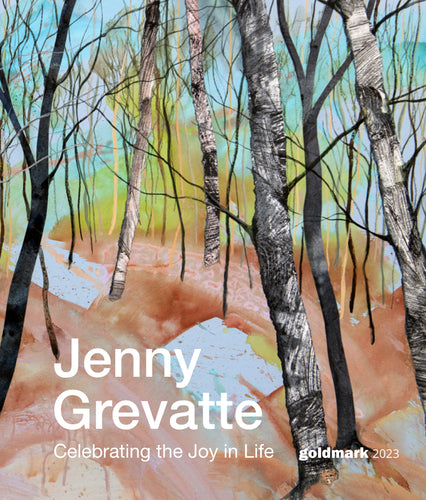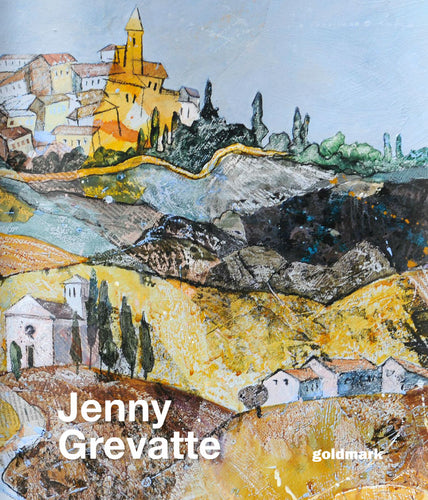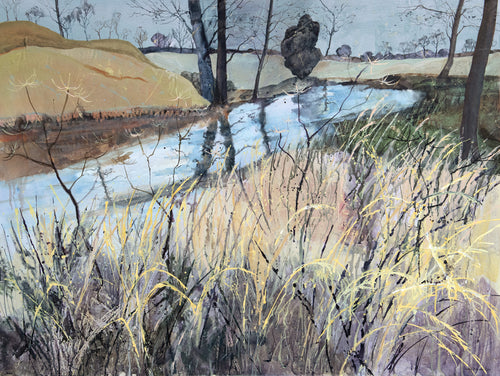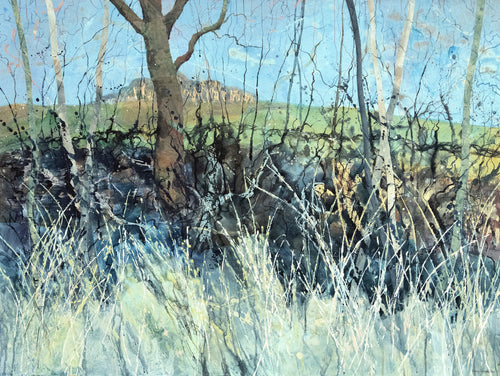Modern British art has had an intimate relationship with the tree. For a time treated as mere backdrop filler for topographical landscapes, in the late 18th century an explosion of close studies of arboreal specimens led to widespread reappraisal of the painting of trees. Painters were soon including specific varieties in their compositions and professing their favourites. John Sell Cotman made detailed analytical studies of species, studying their anatomy as if in a life class. Constable adored them, while his rival Turner remained ambivalent: famously bored with the evergreens of the French Alps, he transplanted to their slopes more varied examples from native British copses, but when painting at home favoured tall, thin, vertiginous examples, with a penchant for the continental Pine.
 Secret Bluebell Wood by Jenny Grevatte
Secret Bluebell Wood by Jenny Grevatte
Palmer preferred cypresses, or horse chestnuts in full, puffy bloom; Edward Lear the unloved olive tree among the oranges and almonds of Corfu. Ruskin famously wrote, ‘If you can paint one leaf, you can paint the world’, and prescribed the close drawing of trees to his students: but despite this sudden blossoming of arboricultural interest, the tree was still too often relegated to the realm of ‘study’; rarely did it take centre stage with quite the vigour and vibrancy as it does in the work of Jenny Grevatte.
It wasn’t until the arrival of the Neo-Romantics – the school of Sutherland and the two Nashes, John and Paul – that the tree became a full-blooded, formal subject in and of itself, a modernist conduit for self-expression; Grevatte finds herself in good company. Like Sutherland, she likes to get up close to her subjects, to experience them from within the overarching ceiling of branches rattling against one other, where trees cease being single entities and form an interconnecting matrix of positive and negative shapes.
 detail from Mossy Trees
detail from Mossy Trees
Like Sutherland too, she does not always work from an actual scene or directly from a sketchbook. Sketches made en plein air build up into a repertoire of established forms and designs. These combine to make imagined scenes, or settings from a ‘stored visual memory’ that have less to do with the actuality of place than felt experience: ‘I’m not so much trying to recreate what I see, but the atmosphere, the quality of light and colour that overwhelms me when I look at them…that’s usually the problem, how do you translate what is such an overwhelming sensation into paint and not overdo it, not say too much…’
 Farmer Frear's Orchard
Farmer Frear's Orchard
Her influences are both direct – she cites Ivon Hitchens, a fellow painter of trees, from whom she learnt the power of wide, almost panoramic canvases – and oblique: the ‘curry paste yellows’ borrowed from Patrick Heron and William Scott, for example, that illuminate branches caught in patches of sunlight (St Ives has been an inspirational mainstay, both for its geography, where fertile woodland meets coastline, and its long artistic heritage).
 Pink Frost
Pink Frost
Grevatte’s own painting processes range from the methodical to the playful. Most of her paintings are dubbed ‘mixed media’, and for good reason. Many have laboriously layered surfaces built up from collaged elements or broad painted strokes, the overlapping patches of dark and bright colour echoing intersecting branches and the dance of light between leaves. Splatter painting adds to her trees a convincing polychromy: look closely at the surface of an old oak or thorny hedgerow and you’ll find any number of reds and greens, rusts and lilacs in the spotted surfaces of the wood. Dribbling wet paint onto paper from a brush or pipette, random pools and droplets can be manoeuvred through the use of a straw, creating coloured streaks that catch the light.
 detail from Pink Frost, revealing some of Grevatte's splatter and rub techniques simulating snowfall
detail from Pink Frost, revealing some of Grevatte's splatter and rub techniques simulating snowfall
This great combination of materials and arsenal of processes give Grevatte the power to convey the individual presence of one tree or another, the various weights and movements of a single specimen through the seasons: thick, almost impastoed paint for a mass of autumn leaves; thin, watered-down washes for slender winter boughs. Some techniques she has made quite her own: torn newspaper strips, arranged at corresponding angles, ingeniously mimic the black and white camouflage bark of silver birches that peels and splits like paper.
 Portrait of a Hollow Oak, Bradgate
Portrait of a Hollow Oak, Bradgate
Her dedication to exploring new avenues of paint application, of collage, grattage, sgraffito and splatter, demonstrate her awareness of the particular qualities of each new painted experience. Each new tree painting is not merely generic; it speaks to a specific experience, and to specific subjects. A series of paintings of oak trees are not termed ‘studies’ but ‘portraits’; each example is as multifaceted as a human figure. To treat them as Grevatte does, with as much expressive and sympathetic depth, reaffirms our peculiar relationship with trees, onto which we seem to project so many reflections of our own inner psyche.
